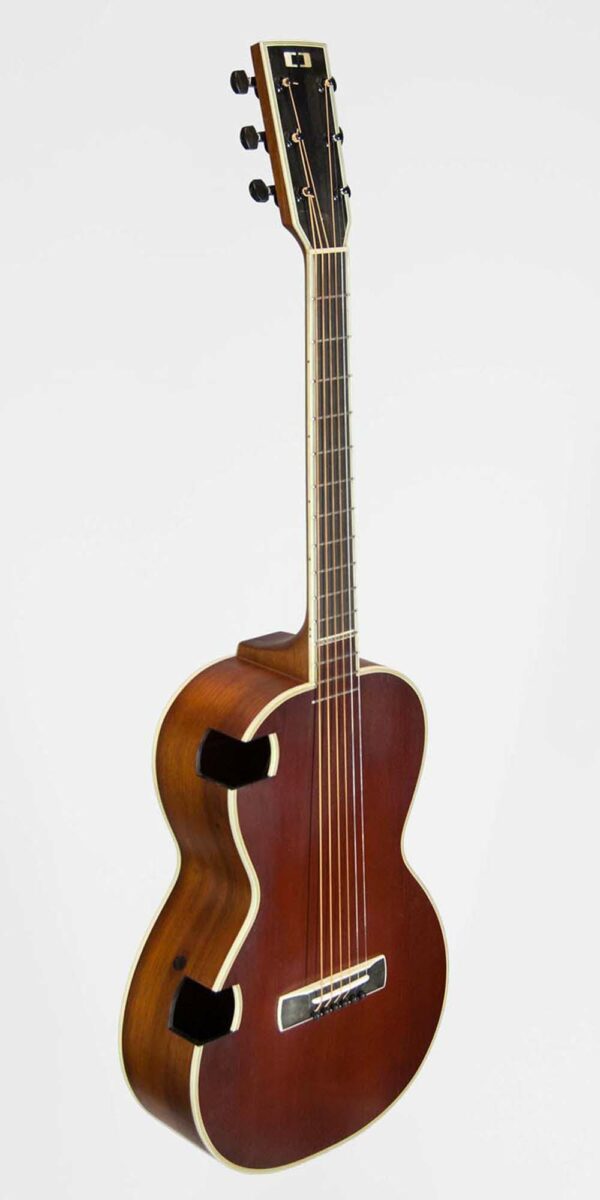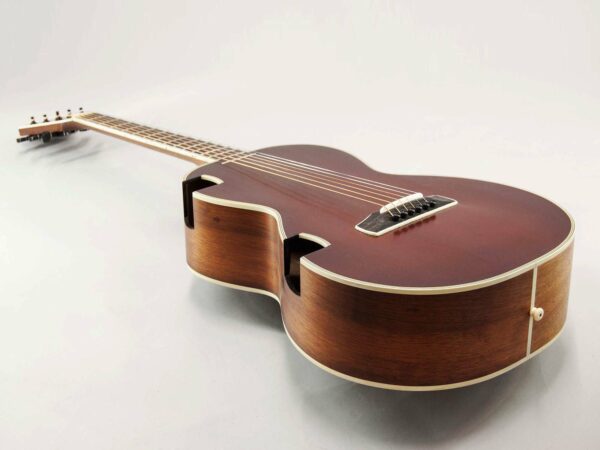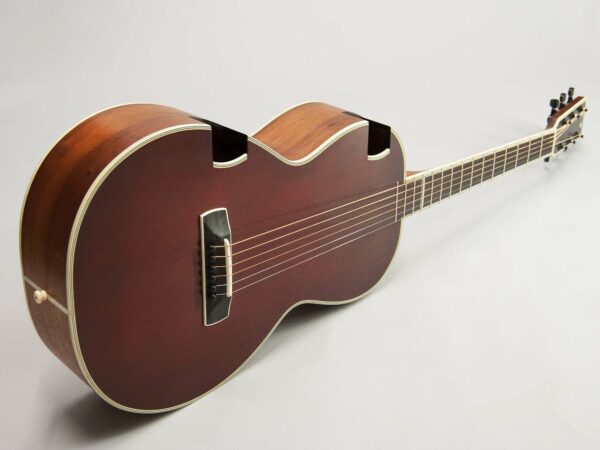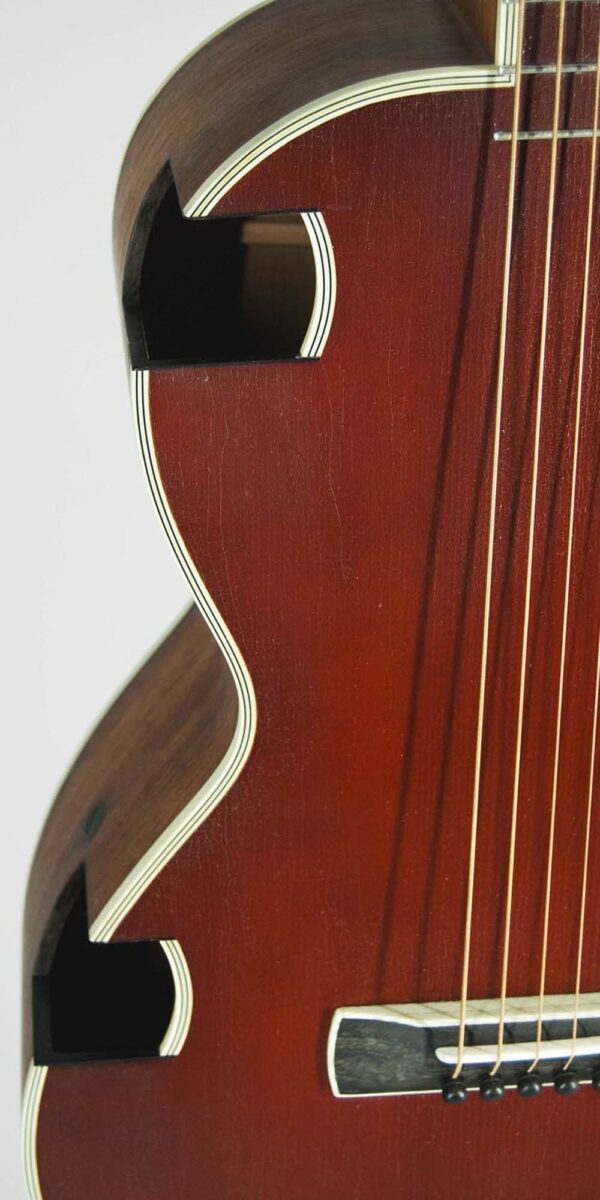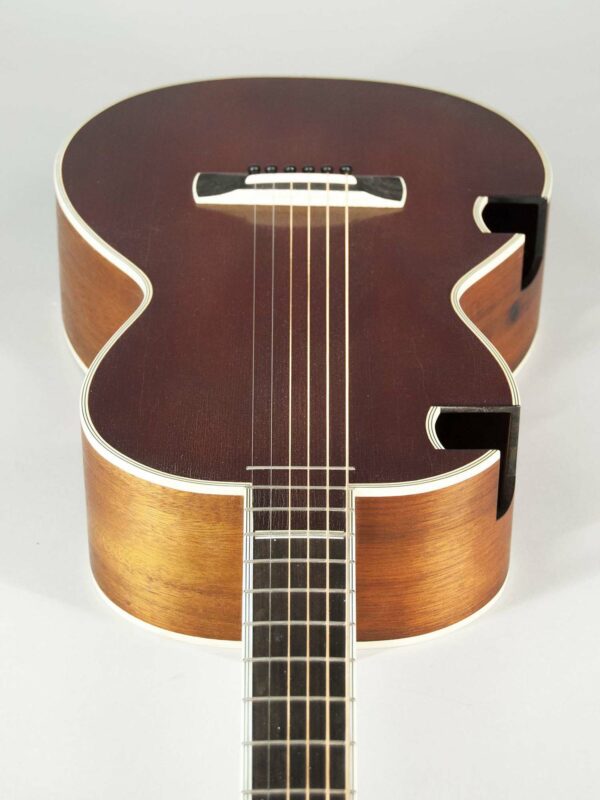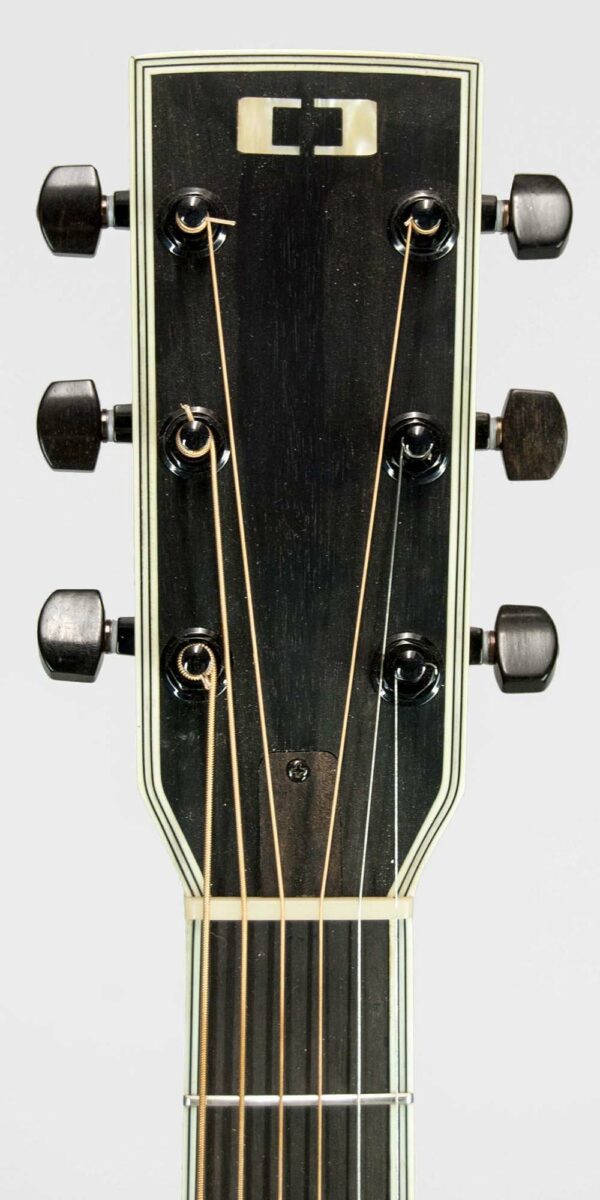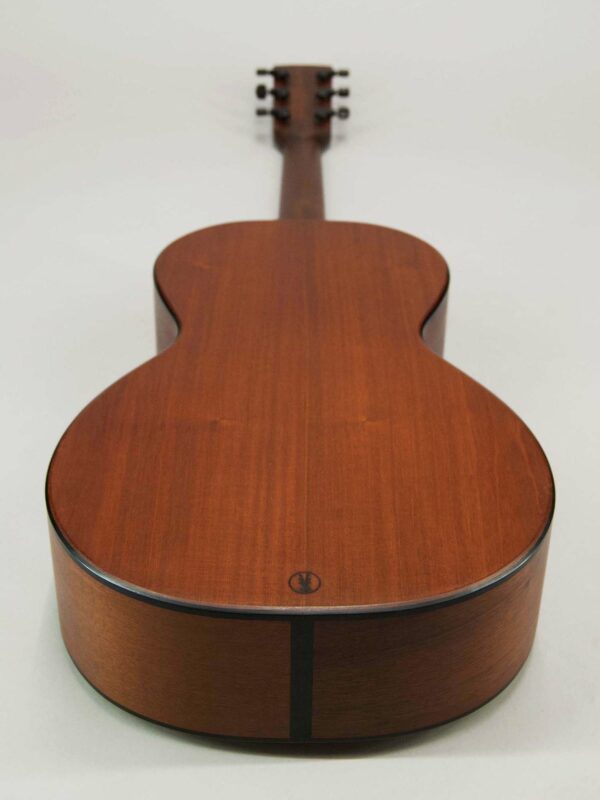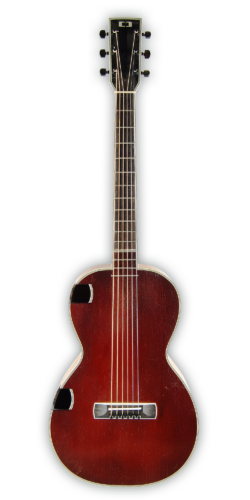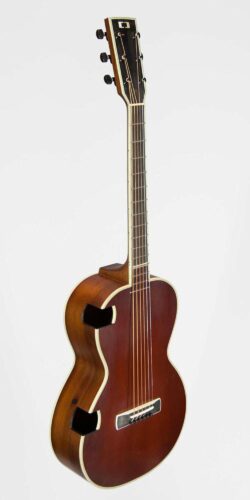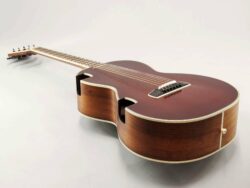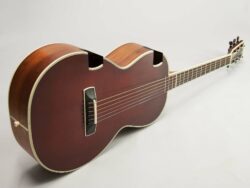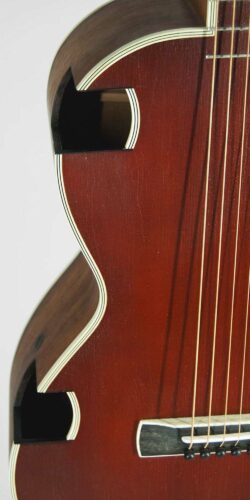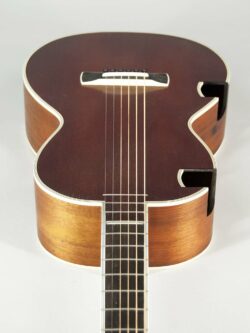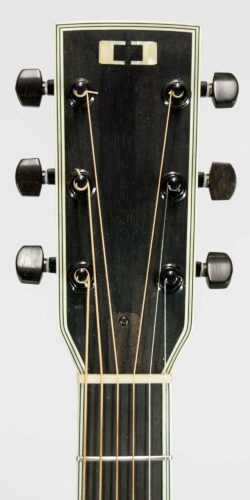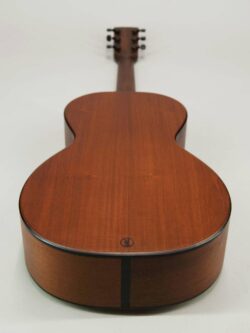Spatial Radiation Parlor
Spatial Radiation Parlor
Focused and projection…
these are two descriptions that you hear very often in connection with guitars.
In our opinion, however, especially with PARLOR guitars, these terms need to be rethought. We believe that projection in particular comes from a time when you had to fill halls with the acoustic sound and therefore built very loud guitars. Today, however, there are so many good amplifying options available that this no longer has to be a goal. We know that most guitarists play their high-quality guitars at home and the volume is not the most important thing, but a sound that lets you dive into it and brings a smile on your face… like a great wine..;-)
PARLOR’s are often called couch guitars, because they are small and handy and therefore optimal to have them comfortable around you…at the couch…in addition, in this ambience, the very moments happen when the inspiration meets you or you lose yourself in playing. And that’s exactly where we started and now take a completely different approach than is usually the case in guitar making. We call it SPATIAL RADIATION GUITAR. The guitar does not radiate forward like a trumpet, but encloses one, one floats in a sound cloud. We achieve this by a completely new internal structure, the free-swinging top up to the neck attachment and the 2 sound holes on the upper side, for each ear one.
Inside I have omitted the large upper brace, which ensures the statics, and this is now directed to the sides via carbon bars. We call this construction principle Turner compression absorber, as reverence to Rick Turner, who built this into his instruments many years ago. The principle has been around for a long time, for example on Banjos, but in elegance, we found Rick’s solution the most beautiful. Through that, and by moving the sound holes to the edge of the top, we now have a top that can swing in its full length and not just to 2/3 as usual. This leads – long speech in a short sense – to an outrageous sound. Incredibly large and warm for an instrument with these small dimensions. We built various prototypes and finally chose the one to our new regular model, which pursues our new approach most consistently.
You may have noticed that the fretboard is already finished on the body, as with the very first guitars from the Stradivari period. This on the one hand to take full advantage of the top as mentioned before, but also as a foretaste of the beginnings of guitar construction. This, combined with the most modern approach such as the carbon static solution, the new bracing layout and the sound holes at the top edges, should be like a foray through the history of guitar making, from the beginnings to the modern age and beyond… By attaching the fretboard to the body, the neck angle has to be built steeper and the bridge higher, which leads to more torsion and thus to a faster response and more pressure, which means nothing more than that it sounds better. We deliberately kept the sound holes functional … form follows function in its purest form. Everything else seemed artificial or too wanted. You should and can see from the guitar that a new path is being broken.
We beat us with big words… but after 45 years of guitar making, you know when something extraordinary has been created… this PARLOR is it!
The PARLOR is included in our regular program in this construction, of course always with the possibility to make individual adjustments, such as neck profile, wood selection, color, etc.
LINK to SRP played by Francis Coletta
DEMO I. – recorded with 2 SLATE vms ml-2 mics straight into computer, just added a little room. As always, it’s best to listen to the samples with headphones.
DEMO II. – and on many wishes, we have recorded the new SPATIAL RADIATION PARLOR again with only one microphone Neumann Condenser and without any effects. Here’s the proof that she sounds wonderful even in the simplest set up…But it sounds best acoustically when the 2 sound holes for the 3-D effect unfold their strength.
LINK to watch the Parlor in Pinup mode
PS: The logo on the headplate is a mirrored C… for Claudia and Claudio. This will be on all instruments from now on, but not always so prominent on the head.
ACOUSTIC GUITARS
Ideally, you can really hear the wood. In a best-case scenario, the materials are perfect to begin with, leaving nothing to correct, therefore allowing the luthier’s skills to be center stage. Choosing the type of wood, the body size, the bracing patterns, the tuning of the plates and openings – that’s where the fun starts! We still get overwhelmed when it also sounds amazing in the end. Such a beautiful work to build guitars!


